I've been pestering Elen Sentier of this parish to teach me how to spin wool, and she finally cracked under the pressure a while back. In retaliation, she asked if I had any sheep fleeces ready so she could show me the process from the beginning. Naturally, I didn't.
However, I do know some people at Gwent Wildlife Trust who keep sheep for grazing nature reserves in the winter, and so I made some enquiries. The result: three fleeces delivered to Elen today by myself.
Elen is therefore going to take me through the process pretty much from sheep to useable wool (and possibly beyond) and I thought it might be useful to have a photographic record of the process for those who might also have an interest.
So, first you start with one of these: A Hebridean sheep (other varieties are available)
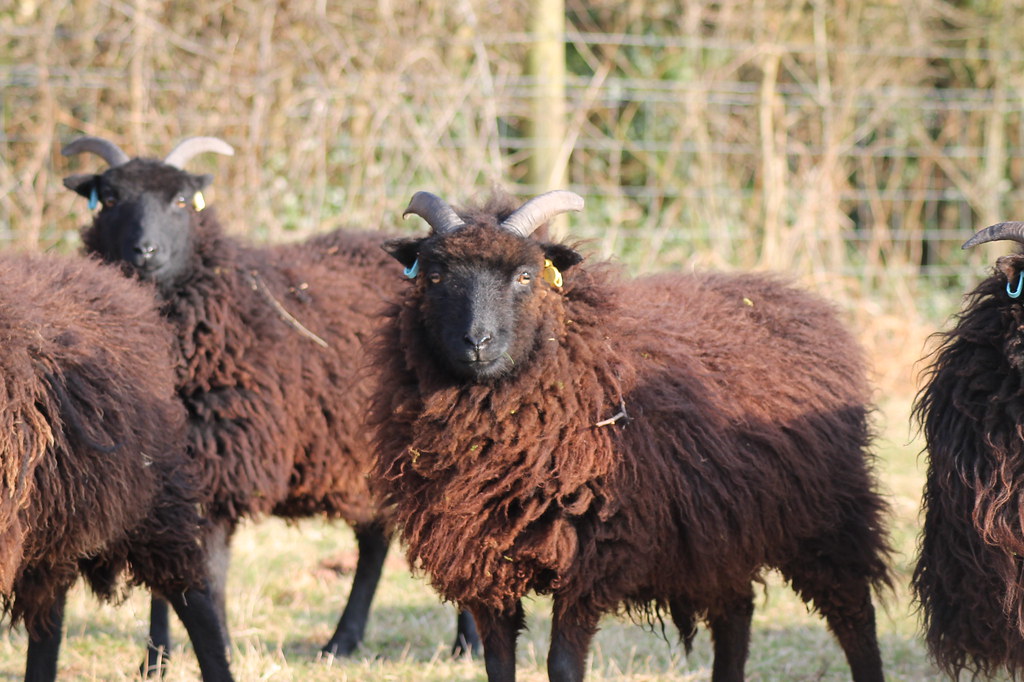
Then you have to catch it, and shear it (usually it is best to get someone else to do this bit for you, as I did)
This is what you get (£4 was what I was charged for this) when the fleece is unrolled
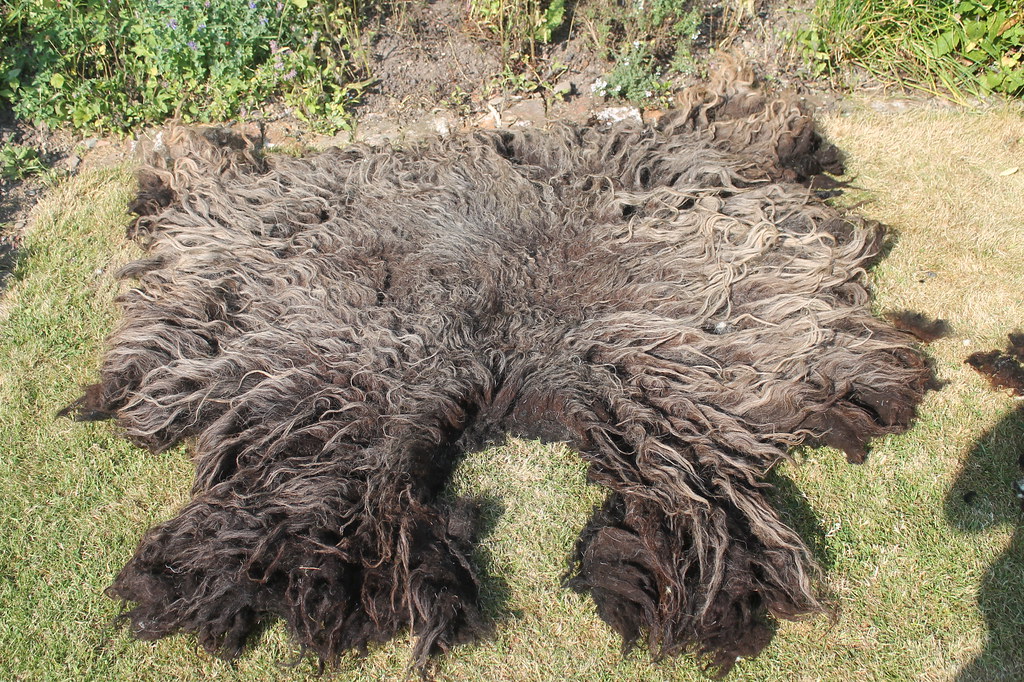
And here are two more. Another hebridean, and a Welsh Mountain sheep fleece (which turned out to be enormous!)
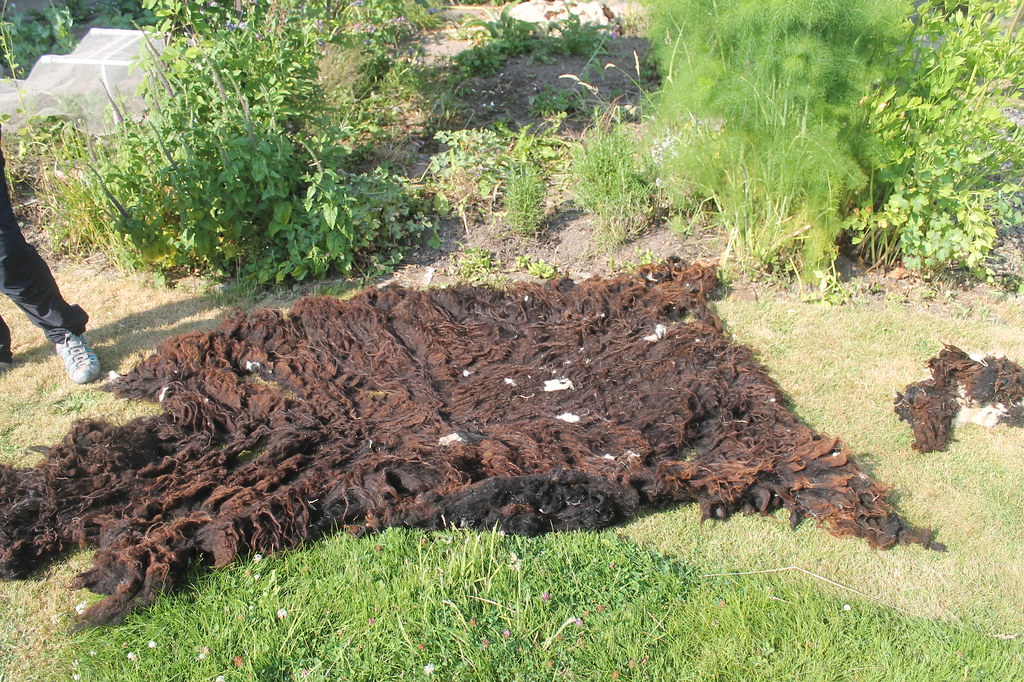
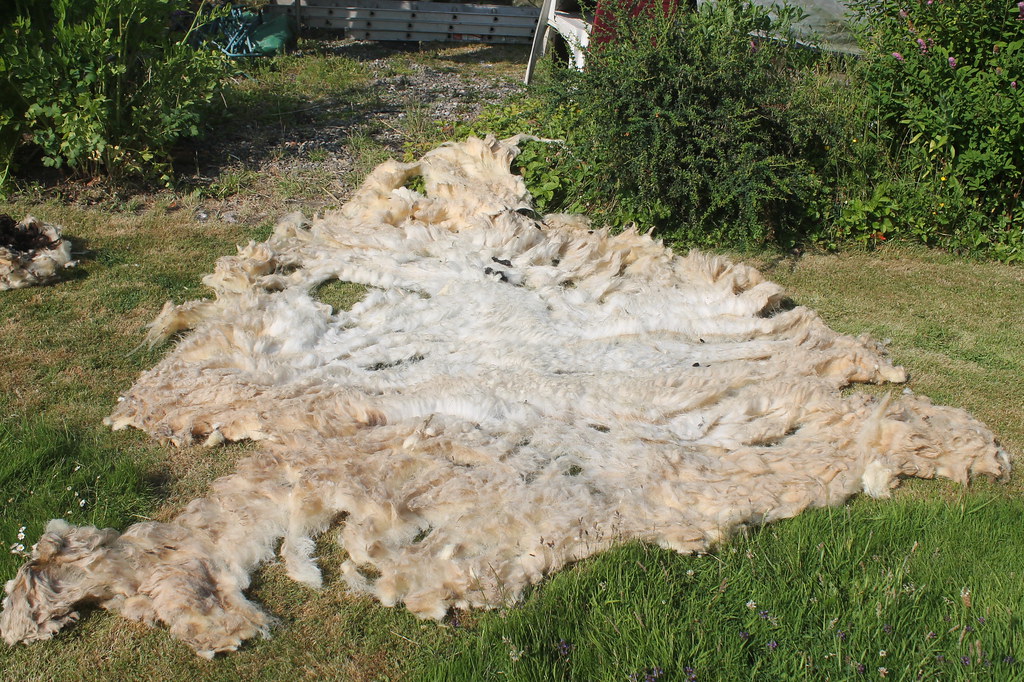
Next step is, in Elen's words, to pull off all the bits that have sheep sh*t on them.

By which time you have smelly hands and greasy lanolin all over you. It might be an idea to use gloves for those that are fastidious. We didn't. It is also useful to do what I did and take pictures whilst someone else actually does this bit.
Having cleaned it up, and pulled out any obvious bits of plant material and other grot that might be in the fleece, you roll it back up and take it indoors. A bath full of warm water with some wool shampoo, and in goes the fleece, making sure it is fully immersed, but no rubbing or wringing of it should be done, or you will end up with felt. Just push it under and get it wet.
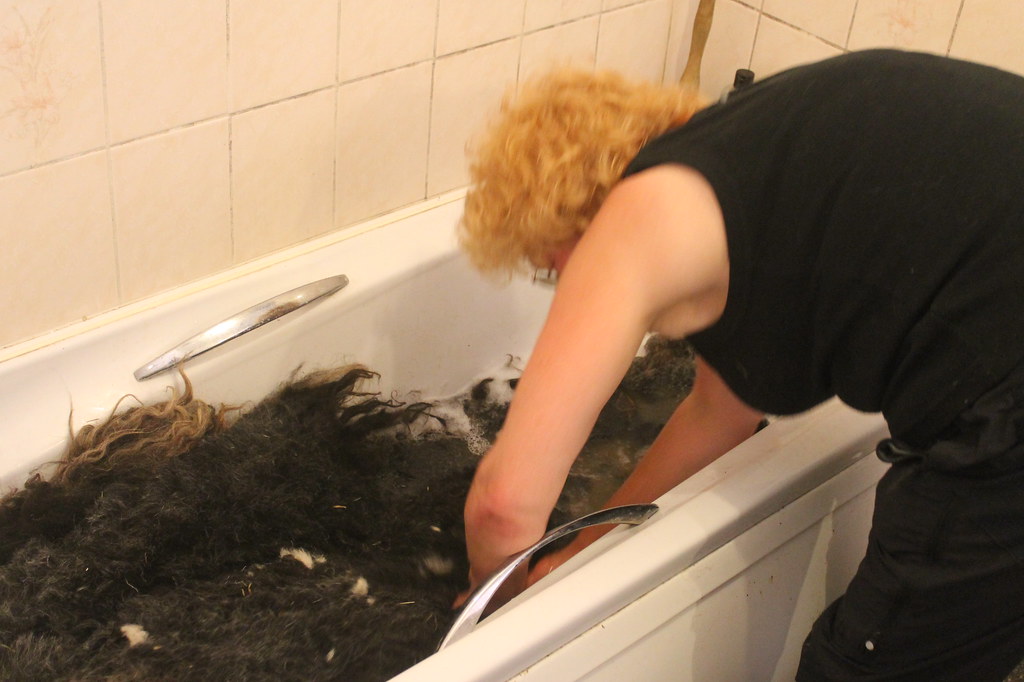
Leave for a few hours, or overnight. Best if you have a spare bathroom for this.
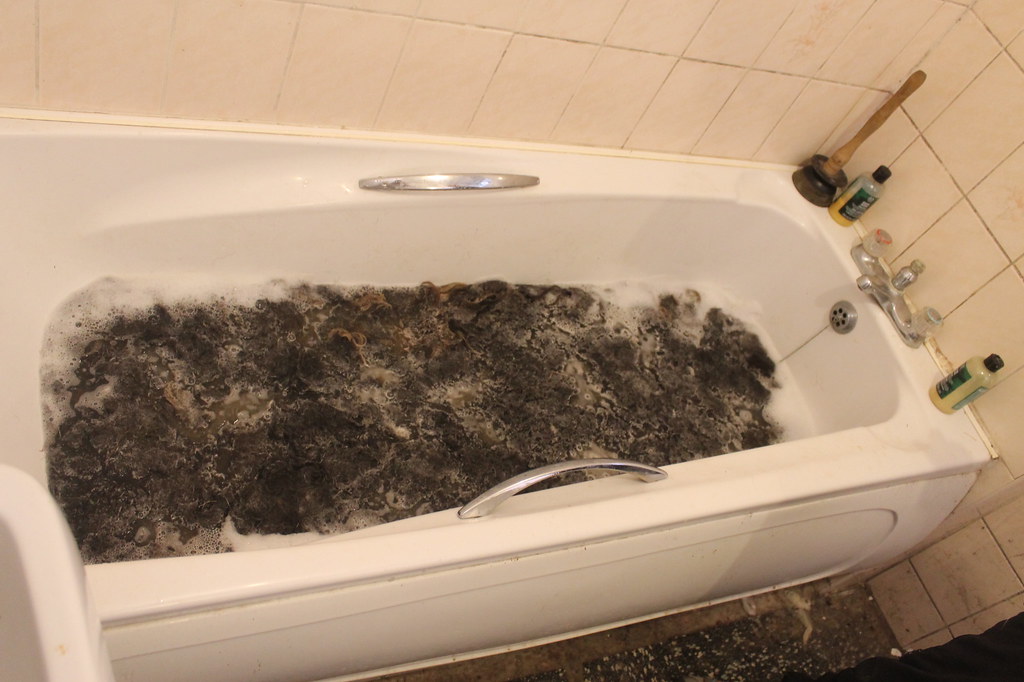
More will follow in due course. Please direct questions to Elen, because she knows what she is doing, and I don't.
However, I do know some people at Gwent Wildlife Trust who keep sheep for grazing nature reserves in the winter, and so I made some enquiries. The result: three fleeces delivered to Elen today by myself.
Elen is therefore going to take me through the process pretty much from sheep to useable wool (and possibly beyond) and I thought it might be useful to have a photographic record of the process for those who might also have an interest.
So, first you start with one of these: A Hebridean sheep (other varieties are available)

Then you have to catch it, and shear it (usually it is best to get someone else to do this bit for you, as I did)
This is what you get (£4 was what I was charged for this) when the fleece is unrolled

And here are two more. Another hebridean, and a Welsh Mountain sheep fleece (which turned out to be enormous!)


Next step is, in Elen's words, to pull off all the bits that have sheep sh*t on them.

By which time you have smelly hands and greasy lanolin all over you. It might be an idea to use gloves for those that are fastidious. We didn't. It is also useful to do what I did and take pictures whilst someone else actually does this bit.
Having cleaned it up, and pulled out any obvious bits of plant material and other grot that might be in the fleece, you roll it back up and take it indoors. A bath full of warm water with some wool shampoo, and in goes the fleece, making sure it is fully immersed, but no rubbing or wringing of it should be done, or you will end up with felt. Just push it under and get it wet.

Leave for a few hours, or overnight. Best if you have a spare bathroom for this.

More will follow in due course. Please direct questions to Elen, because she knows what she is doing, and I don't.

